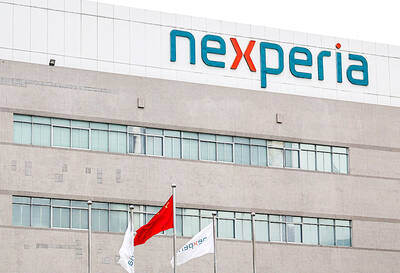EVA Airways Corp (長榮航空) on Monday reported that a net loss in the second quarter narrowed from the previous quarter, as solid demand for cargo services helped offset a decline in passenger volume amid the COVID-19 pandemic.
The airline posted a net loss of NT$614 million (US$20.79 million), or losses per share of NT$0.13, compared with a net loss of NT$1.2 billion, or losses per share of NT$0.25, in the first quarter.
EVA reported earnings per share of NT$0.01 in the second quarter of last year.
As the pandemic continued to cripple the global airline industry, EVA’s consolidated sales fell 56 percent in the second quarter from a year earlier to NT$19.29 billion, with its revenue from passenger flights plunging 93.6 percent year-on-year to NT$1.52 billion, the company said in a statement.
However, the steep decline in passenger revenue was offset by a 137 percent annual jump in cargo services income to NT$14.34 billion in the second quarter, EVA said.
Analysts said that the airline benefited from robust demand for shipments of high-tech devices and personal protective equipment in the second quarter.
For the first six months of this year, EVA reported a net loss of NT$1.83 billion, or losses per share of NT$0.38.
Consolidated sales decreased 44 percent year-on-year, with revenue from passenger flights falling 59.6 percent from the previous year to NT$20.17 billion and revenue from cargo services climbing 70.7 percent to NT$20.72 billion.
EVA’s statement of a strong second-quarter increase in cargo revenue followed a similar report last week by China Airlines Ltd (CAL, 中華航空), which reported net profit of NT$2.46 billion, or earnings per share of NT$0.45, for the second quarter, recovering from a net loss of NT$3.77 billion, or losses per share of NT$0.69, in the first quarter.
Shares of EVA and CAL fell 1.35 percent and 1.79 percent to NT$10.95 and NT$8.24 respectively on the Taiwan Stock Exchange yesterday.
The declines were caused by investors locking in their gains from the previous session, when shares of EVA and CAL rose 3.74 percent and 4.61 percent respectively, dealers said.

JITTERS: Nexperia has a 20 percent market share for chips powering simpler features such as window controls, and changing supply chains could take years European carmakers are looking into ways to scratch components made with parts from China, spooked by deepening geopolitical spats playing out through chipmaker Nexperia BV and Beijing’s export controls on rare earths. To protect operations from trade ructions, several automakers are pushing major suppliers to find permanent alternatives to Chinese semiconductors, people familiar with the matter said. The industry is considering broader changes to its supply chain to adapt to shifting geopolitics, Europe’s main suppliers lobby CLEPA head Matthias Zink said. “We had some indications already — questions like: ‘How can you supply me without this dependency on China?’” Zink, who also

The number of Taiwanese working in the US rose to a record high of 137,000 last year, driven largely by Taiwan Semiconductor Manufacturing Co’s (TSMC, 台積電) rapid overseas expansion, according to government data released yesterday. A total of 666,000 Taiwanese nationals were employed abroad last year, an increase of 45,000 from 2023 and the highest level since the COVID-19 pandemic, data from the Directorate-General of Budget, Accounting and Statistics (DGBAS) showed. Overseas employment had steadily increased between 2009 and 2019, peaking at 739,000, before plunging to 319,000 in 2021 amid US-China trade tensions, global supply chain shifts, reshoring by Taiwanese companies and

Taiwan Semiconductor Manufacturing Co (TSMC, 台積電) received about NT$147 billion (US$4.71 billion) in subsidies from the US, Japanese, German and Chinese governments over the past two years for its global expansion. Financial data compiled by the world’s largest contract chipmaker showed the company secured NT$4.77 billion in subsidies from the governments in the third quarter, bringing the total for the first three quarters of the year to about NT$71.9 billion. Along with the NT$75.16 billion in financial aid TSMC received last year, the chipmaker obtained NT$147 billion in subsidies in almost two years, the data showed. The subsidies received by its subsidiaries —

OUTLOOK: Pat Gelsinger said he did not expect the heavy AI infrastructure investments by the major cloud service providers to cause an AI bubble to burst soon Building a resilient energy supply chain is crucial for Taiwan to develop artificial intelligence (AI) technology and grow its economy, former Intel Corp chief executive officer Pat Gelsinger said yesterday. Gelsinger, now a general partner at the US venture capital firm Playground Global LLC, was asked at a news conference in Taipei about his views on Taiwan’s hardware development and growing concern over an AI bubble. “Today, the greatest issue in Taiwan isn’t even in the software or in architecture. It is energy,” Gelsinger said. “You are not in the position to have a resilient energy supply chain, and that,